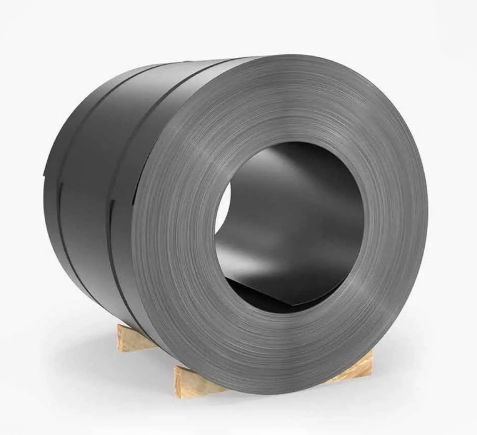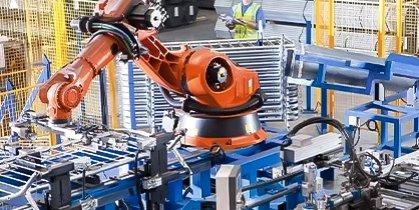Views: 0 Author: Site Editor Publish Time: 2025-09-13 Origin: Site








Carbon steel has been the backbone of manufacturing and construction for centuries. Made from iron and carbon, it delivers strength, versatility, and affordability that few materials can match. From skyscrapers and bridges to tools and cookware, carbon steel ensures durability and reliability in countless applications. In this article, we’ll explore its composition, properties, applications, and the latest advancements in heat treatment and sustainable practices—giving you a clear view of why carbon steel remains essential today.
Carbon steel is mostly iron mixed with a small but powerful amount of carbon. This tiny addition changes how the metal behaves. Even less than 2% carbon makes a big difference in strength, hardness, and flexibility.
Besides carbon, you’ll also find manganese that adds toughness. Silicon is usually present because it helps remove oxygen during production. Sulfur and phosphorus sneak in too, but too much of them makes the steel brittle.
Unlike stainless or alloy steel, carbon steel doesn’t rely on extra elements like chromium or nickel. That makes it simpler and cheaper to produce, but also less resistant to rust.
| Type of Carbon Steel | Carbon Content (%) | Main Traits |
|---|---|---|
| Low-Carbon (Mild) | 0.05 – 0.25 | Soft, weldable, very ductile |
| Medium-Carbon | 0.25 – 0.60 | Balanced strength and ductility |
| High-Carbon | 0.60 – 1.00 | Hard, strong, less flexible |
| Ultra-High-Carbon | 1.25 – 2.00 | Extremely hard, very brittle |
Carbon steel is significantly more affordable compared to stainless or alloy steels. This makes it an ideal choice for projects where budget constraints are a concern. Whether you’re working on large-scale construction projects or smaller DIY tasks, the lower cost of carbon steel can help you stay within your financial limits without compromising on quality.
Carbon steel is renowned for its strength and reliability. It can handle heavy loads and withstand significant stress, making it a go-to material for structural applications. From building beams to heavy machinery parts, carbon steel provides the robustness needed to support substantial weight and pressure.
Low-carbon steel, in particular, is highly weldable. This means it can be easily joined with other pieces of metal, allowing for greater flexibility in manufacturing and construction processes. Weldability is crucial for creating complex structures and ensuring that components fit together seamlessly.
Medium and high-carbon steels can be heat-treated to enhance their hardness and strength. This process allows manufacturers to customize the steel’s properties to meet specific requirements. Heat treatment can significantly improve the steel’s performance in applications where high strength and durability are essential.
Carbon steel is incredibly versatile and can be used in a wide range of industries and processes. It is commonly found in construction, automotive manufacturing, shipbuilding, and many other sectors. Its adaptability makes it a popular choice for various applications, from simple tools to complex machinery.

Annealing is a heat treatment process that involves heating the steel to a specific temperature and then cooling it slowly. This process softens the material, making it more ductile and easier to machine. Annealing is particularly useful for high-carbon steels, which can be quite hard and difficult to work with in their initial state. By annealing, manufacturers can reduce the hardness of the steel, making it more pliable and easier to shape. This process is essential for preparing steel for further machining or forming operations.
Quenching is a rapid cooling process that involves immersing the heated steel in water, oil, or another cooling medium. This rapid cooling locks the carbon atoms in place, creating a very hard but brittle structure known as martensite. Quenching is used to achieve high hardness levels, which are essential for applications requiring sharp edges and high wear resistance, such as cutting tools and blades. However, the brittleness of quenched steel can be a drawback, making it prone to cracking under certain conditions.
Tempering is a heat treatment process that follows quenching. It involves reheating the quenched steel to a specific temperature below the critical point and then cooling it slowly. Tempering reduces the brittleness of the steel while maintaining its hardness. This process improves the toughness and durability of the steel, making it more suitable for practical applications. Tempering is essential for balancing the hardness and toughness of steel, ensuring that it can withstand both high stress and repeated use without breaking.
Normalizing is a heat treatment process that involves heating the steel above its critical temperature and then cooling it in the air. This process creates a uniform grain structure, which improves the overall strength and mechanical properties of the steel. Normalizing is often used to refine the grain structure of steel after hot working or welding, ensuring that the material has consistent properties throughout. This process helps to eliminate internal stresses and improve the steel’s resistance to deformation and cracking.
Spheroidizing is a specialized heat treatment process used primarily for high-carbon steels. It involves heating the steel to a specific temperature and then cooling it slowly in a controlled environment. This process forms rounded carbides within the steel, which significantly improves its machinability. Spheroidized steel is easier to machine and shape, making it ideal for applications where high precision and intricate designs are required. This process is particularly useful for high-carbon steels, which can be challenging to work with due to their high hardness and brittleness.
Carbon steel is a cornerstone material in the construction industry. Its strength and durability make it ideal for a wide range of applications:
Beams and Structural Frameworks: High-strength carbon steel beams provide the backbone for many buildings, bridges, and other large structures. These beams can support significant weight and withstand the elements over time.
Reinforcing Bars (Rebar): Low-carbon steel rebar is used to reinforce concrete structures, enhancing their strength and stability. Rebar helps prevent cracking and extends the lifespan of concrete buildings and bridges.
Pipelines: Medium and high-carbon steel pipelines are used for transporting water, oil, and gas. These pipelines are designed to handle high pressure and resist corrosion, ensuring safe and efficient transport of vital resources.
The automotive industry relies heavily on carbon steel for its strength and versatility:
Axles and Shafts: High-carbon steel axles and shafts provide the necessary strength and durability to handle the mechanical stresses of vehicle operation. These components must withstand significant torque and wear over time.
Gears: Medium-carbon steel gears are used in transmissions and differentials. Their strength and durability ensure smooth and reliable operation, even under heavy loads.
Car Frames: Low and medium-carbon steel frames form the structural backbone of vehicles. These frames provide rigidity and protection, ensuring the safety and integrity of the vehicle.
Carbon steel is also found in many everyday consumer products:
Cookware: High-carbon steel cookware, such as frying pans and knives, is known for its durability and heat retention. These products can withstand high temperatures and maintain their sharp edges, making them ideal for cooking and food preparation.
Tools: Medium and high-carbon steel tools, including hammers, wrenches, and screwdrivers, are designed for strength and durability. These tools can handle repeated use and resist wear, ensuring long-lasting performance.
The shipbuilding industry uses carbon steel extensively due to its strength and ability to withstand harsh marine environments:
Hulls and Plates: High-strength carbon steel plates form the hulls of ships and other marine vessels. These plates must be resistant to corrosion and able to withstand the constant impact of waves and saltwater.
Cables and Anchors: Medium-carbon steel cables and anchors provide the strength and reliability needed for mooring and securing ships. These components must be durable and resistant to wear and tear.
Carbon steel plays a crucial role in the energy sector, particularly in power generation and energy transmission:
Turbines: Medium and high-carbon steel turbines are used in power plants to generate electricity. These turbines must be able to withstand high temperatures and mechanical stresses, ensuring efficient and reliable power generation.
Pressure Vessels: High-carbon steel pressure vessels are used to contain and transport high-pressure gases and liquids. These vessels must be strong and durable, ensuring safe and efficient operation.
Pipelines: Medium and high-carbon steel pipelines are used for transporting oil, gas, and other energy resources. These pipelines must be resistant to corrosion and able to handle high pressures, ensuring the safe and efficient transport of vital resources.
Carbon steel is also widely used in various industrial manufacturing processes:
Machinery Components: Medium and high-carbon steel components, such as gears, shafts, and bearings, are used in industrial machinery. These components must be strong and durable, ensuring reliable operation and long service life.
Structural Components: Low and medium-carbon steel structural components, such as beams, columns, and frames, are used in industrial buildings and facilities. These components provide the necessary strength and stability to support heavy machinery and equipment.
In the agricultural sector, carbon steel is used for its strength and durability:
Farm Equipment: Medium and high-carbon steel components, such as plows, harrows, and cultivators, are used in agricultural machinery. These components must be strong and durable, ensuring reliable performance in demanding field conditions.
Storage Structures: Low and medium-carbon steel structures, such as silos and grain bins, are used for storing agricultural products. These structures must be strong and resistant to corrosion, ensuring the safe and efficient storage of crops and other agricultural products.

Carbon steel is highly recyclable, making it a sustainable choice for many industries. When old beams, tools, or other steel products reach the end of their life cycle, they can be melted down and repurposed into new products with minimal waste. This closed-loop recycling process not only conserves natural resources but also reduces the environmental impact associated with steel production. In fact, steel is one of the most recycled materials in the world, with a recycling rate of over 80%. This high recyclability ensures that carbon steel remains a viable and sustainable material for future generations.
The concept of a circular economy is becoming increasingly important in the steel industry. This approach focuses on maximizing the use of resources and minimizing waste. Steel companies are working to create closed-loop systems where old steel products are collected, recycled, and reintroduced into the production cycle. This not only reduces the need for raw materials but also lowers energy consumption and emissions.
As the world transitions to renewable energy sources, carbon steel is playing a crucial role in the construction of wind turbines, solar panels, and other renewable energy infrastructure. The strength and durability of carbon steel make it an ideal material for these applications. Additionally, the use of renewable energy in steel production processes further reduces the industry’s carbon footprint.
High-carbon steel is stronger, but stainless steel resists corrosion better.
Painting, galvanizing, or applying protective coatings.
It balances cost, strength, and versatility better than most metals.
Pipes, tools, fasteners, car parts, knives, beams.
Carbon steel remains essential to modern manufacturing. It offers strength, versatility, and affordability unmatched by most materials. From skyscrapers to kitchen tools, it’s everywhere. At Zhongrun Steel (Foshan) Co., Ltd., we are at the forefront of innovation, leveraging new green technologies and advanced processing methods to enhance the sustainability and performance of carbon steel. With these advancements, its role in various industries will only grow, ensuring a brighter and more sustainable future for all.